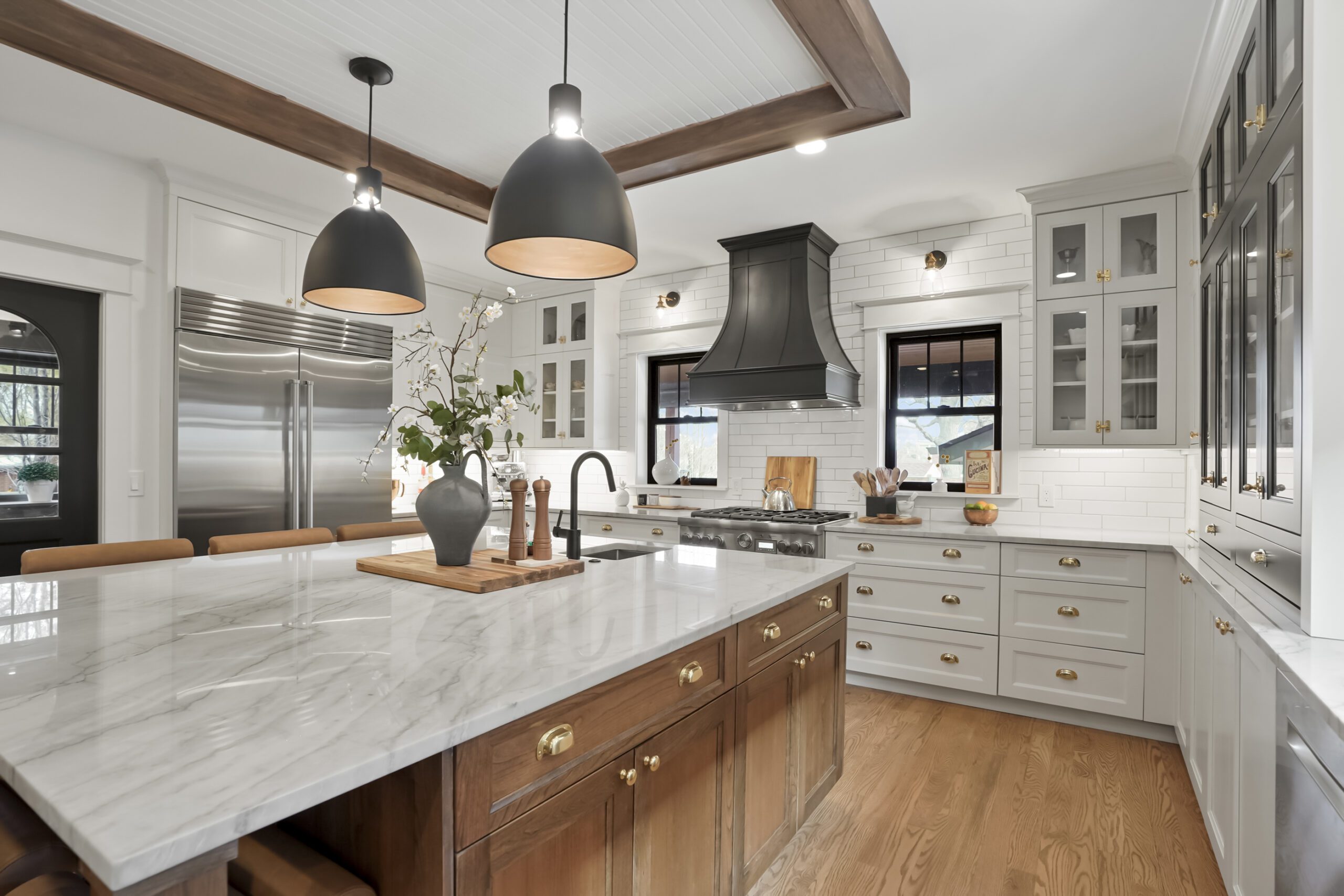02 Apr Cabinet Construction: Furniture Board vs. Plywood
When planning your Denver kitchen remodel, one important decision your designer will discuss is cabinet construction material. Most cabinets feature either furniture board or plywood for their boxes. Both are engineered wood products with distinct characteristics—neither is universally “better,” as each offers specific advantages for different needs and budgets.
Understanding Engineered Wood
Both furniture board and plywood are manufactured by combining wood materials with adhesives. However, their composition and performance characteristics differ significantly.
Furniture Board: Cost-Effective Consistency
Furniture board (or particleboard) represents the most common substrate for cabinet boxes, drawer boxes, and shelves. This material combines wood particles and resin, often utilizing byproducts from plywood manufacturing.
Since furniture board lacks natural grain patterns, manufacturers typically apply wood veneer or laminate finishes for aesthetic appeal.
The quality depends on particle size, glue content, and board density—smaller particles create denser, heavier, and more stable boards. Medium-density fiberboard (MDF) stands out as a premium particleboard option that rivals plywood in quality, though its weight can complicate installation.
Advantages:
- More budget-friendly than plywood
- Uniform texture throughout
- Better dimensional stability during temperature changes
- High-density versions offer enhanced strength
Disadvantages:
- Heavier than comparable plywood
- Generally less structural strength
- More vulnerable to surface damage
- Susceptible to moisture damage
- Fasteners may loosen over time
Plywood: Superior Strength and Stability
Plywood consists of thin wood layers compressed and adhered together in alternating grain directions, creating exceptional structural integrity. Some manufacturers offer “green” plywood options, featuring sustainably sourced wood and reduced chemical emissions—perfect for environmentally conscious homeowners.
Plywood quality varies based on layer count, wood thickness, and adhesive quality. Lower-grade options may contain gaps that compromise reliability.
Advantages:
- Lighter weight than furniture board
- Greater strength and stability
- Better moisture resistance
- Eco-friendly options available
Disadvantages:
- Higher cost
- More susceptible to warping
Making Your Decision
While plywood offers superior performance in many aspects, furniture board remains an excellent choice with many merits. Some premium cabinet manufacturers like Crystal Cabinets include plywood as standard, while others offer it as an upgrade (typically 12-16% above base pricing).
Importantly, well-constructed and properly installed cabinets will perform beautifully regardless of material choice—most homeowners can’t visually distinguish between plywood and furniture board cabinets once installed.

Photo | BKC Kitchen and Bath
Still uncertain which option best suits your Denver kitchen project? Connect with our professional kitchen designers to discuss your specific needs and preferences. Visit our showroom and compare cabinet construction details and the differences between plywood and furniture board.
Contact BKC Kitchen and Bath today for expert guidance on your kitchen remodeling journey!




